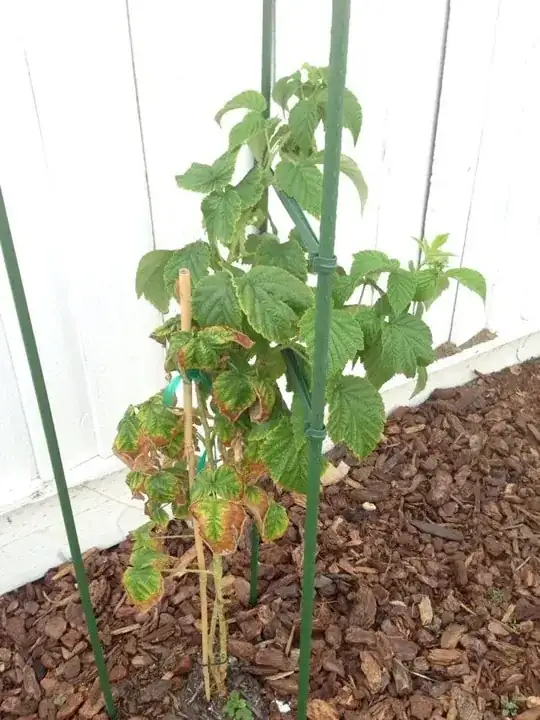I have a Canby raspberry plant. One cane is showing some form of nutrient deficiency. On other hand, the other stalk is is flourishing and even budding fruit. What would cause this, seeing as the two cane's root systems are right next to each other?

I have a Canby raspberry plant. One cane is showing some form of nutrient deficiency. On other hand, the other stalk is is flourishing and even budding fruit. What would cause this, seeing as the two cane's root systems are right next to each other?

Not a nutrient deficiency, more like a drought problem, or that cane is an original one on the plant when you got it, possibly last year's or the year before's cane. The taller, bushy one is newer and younger. Otherwise, some sort of damage or problem with the stem on that one.
UPDATE: Oh dear, Jojo, never mind, not much you can do now. That brown growth at the base must be from where you originally didn't water enough (I remember an earlier query on your raspberries). Valuable lesson though - in future, always check where the stem not only comes from, but goes to...
UPDATE 2: Re your comment on nutrient deficiency - if you look at the rest of the plant, it's fine. The fact that one stem shows some problems cannot mean deficiency, because the whole plant would carry a similar appearance. I recall your earlier question this year, and if I recall correctly, the plant had browning edges on quite a lot of leaves, not just one area. Presumably you increased watering and the problem resolved itself, apart from this one stem, although clearly, the topgrowth on that stem must have been fine and was in fact producing fruit, so a recovery occurred on that stem too - just not at the base. Once leaves have acquired dead, brown areas, these areas will not recover because those parts are dead. In the end, it's not whether a whole stem of something seems healthy - if the rest of the plant is healthy, and the top part of any single stem is growing healthily and fruiting, there clearly has been a problem, but the whole plant has recovered, despite dead or damaged areas. The most essential element, particularly for new and fruiting plants, is sufficient and frequent availability of water - its that which enables take up of nutrients as well as the obvious moisture it requires.